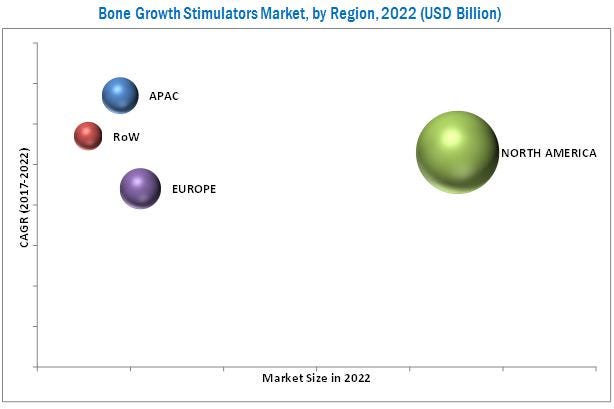The Global Bone Growth Stimulator Market is expected to reach $ 1.41 billion, at a CAGR of 5.4%
Bone growth Stimulator Market by devices offer a cost-effective and safer alternative mode to treat orthopedic diseases as compared to traditional surgical therapies for nonunion bone fractures. These devices have been reported to shorten the patient’s hospital stay as well as lessen the risks of complications and infections.

Bone Growth Stimulator Market segmentation:
· based on products.
· based on application.
· based on end users.
· based on regions.
Download PDF (Bone Growth Stimulator):https://www.marketsandmarkets.com/pdfdownloadNew.asp?id=82341383
Hospitals and Clinics Form the Fastest Growing End-User Segment.
Hospitals:
This segment includes both government and private hospitals that provide treatment or conduct surgeries related to spine, oral and maxillofacial, nonunion/delayed union fractures and dental practices. An increasing patient population, rising procedural volumes of spinal fusion surgeries, growing prevalence of spinal disorders, and growing awareness on bone growth stimulation products are aiding the growth of this segment.
The Major Players Operating in the Bone Growth Stimulator Market:
Orthofix International N.V. (U.S.), DJO Finance LLC (U.S.), Zimmer Biomet Holdings, Inc. (U.S.), Bioventus LLC (U.S.), Medtronic plc (Ireland), Stryker Corporation (U.S.), DePuy Synthes (U.S.), Arthrex, Inc. (U.S.), and Harvest Technologies Corporation (U.S.) are some of the key players in the bone growth stimulator market.
Bone Growth Stimulator Market, by Product
- Implanted Bone Growth Stimulators
- Ultrasonic Bone Growth Stimulators
- Bone Morphogenetic Proteins (BMP)
- Platelet-rich Plasma (PRP)
Request Research Sample Pages:https://www.marketsandmarkets.com/requestsampleNew.asp?id=82341383
Geographical Detailed Analysis for Bone Growth Stimulator Market:
The bone growth stimulator market is classified into North America, Europe, Asia-Pacific, and the Rest of the World.
The global bone growth stimulator market was dominated by North America mainly due to the growing elderly population, increasing the incidence of arthritis and sports injuries, adoption of novel treatment options, and rising demand for minimally invasive spinal surgeries. rising awareness among healthcare professionals related to the novel and upcoming treatment options, and ongoing government initiatives to modernize & expand healthcare infrastructure.

